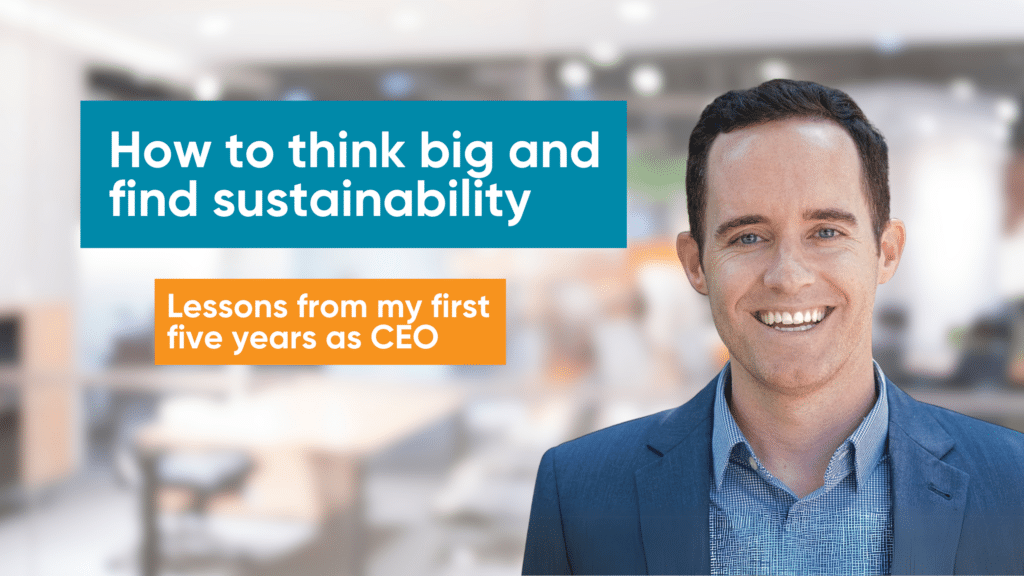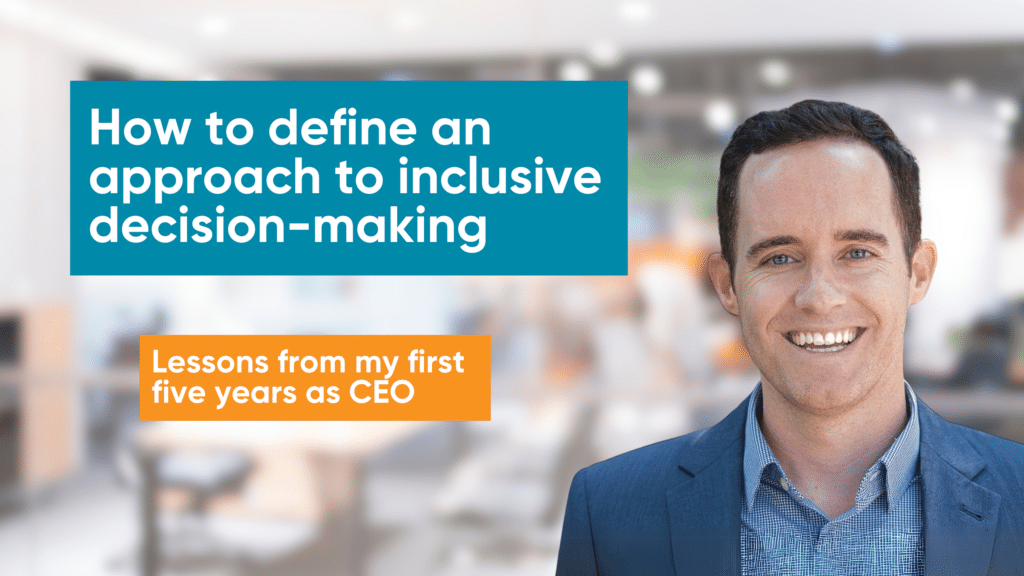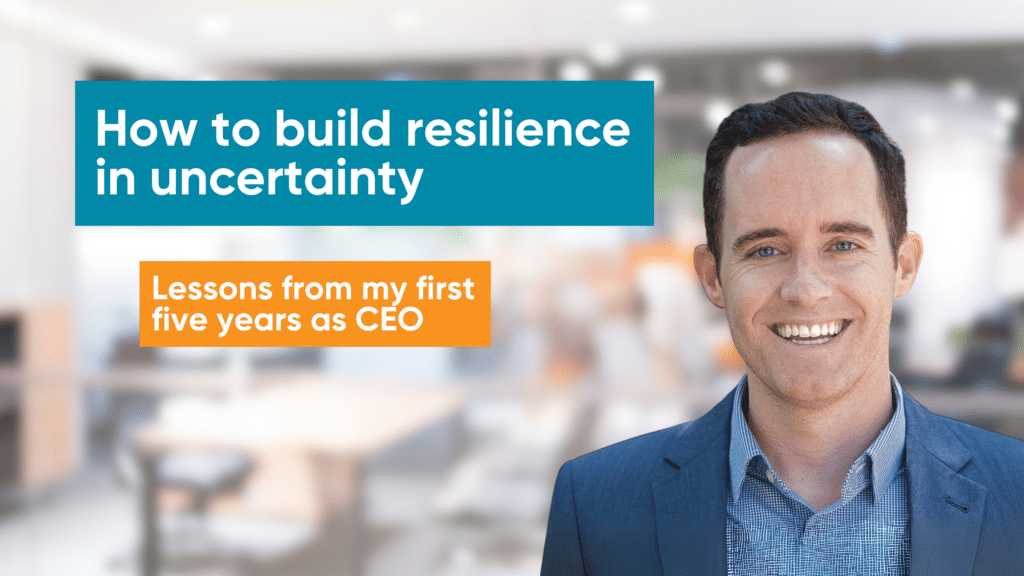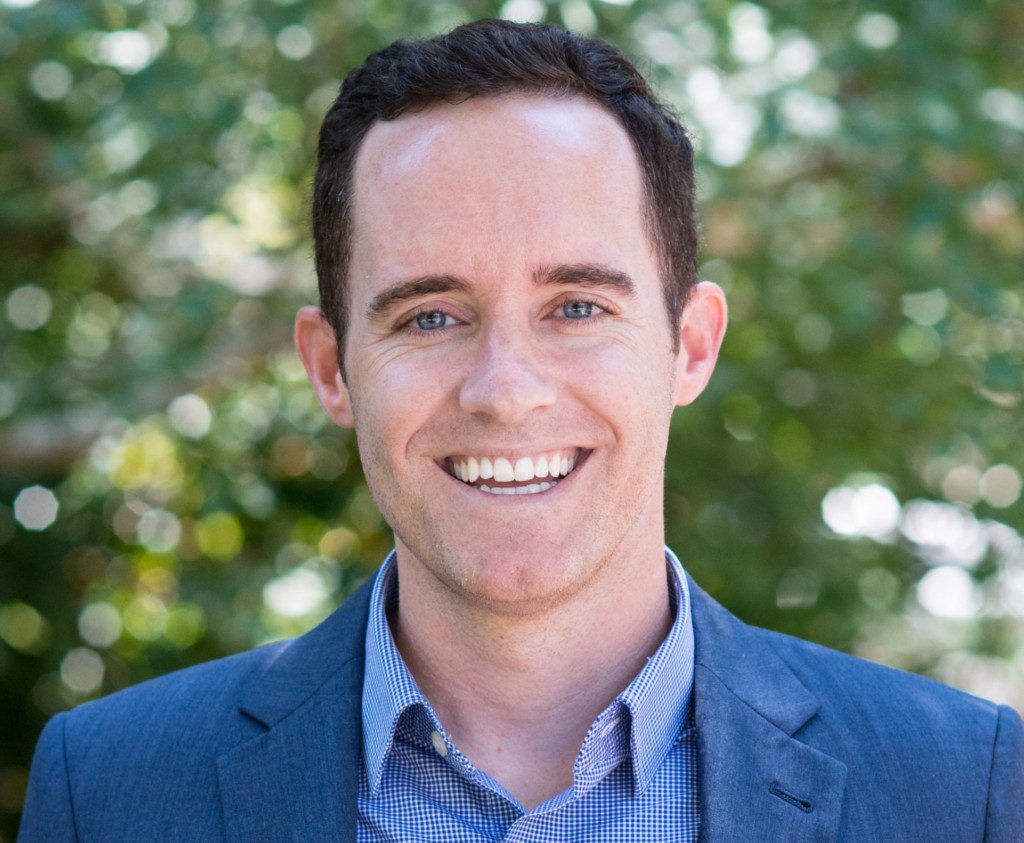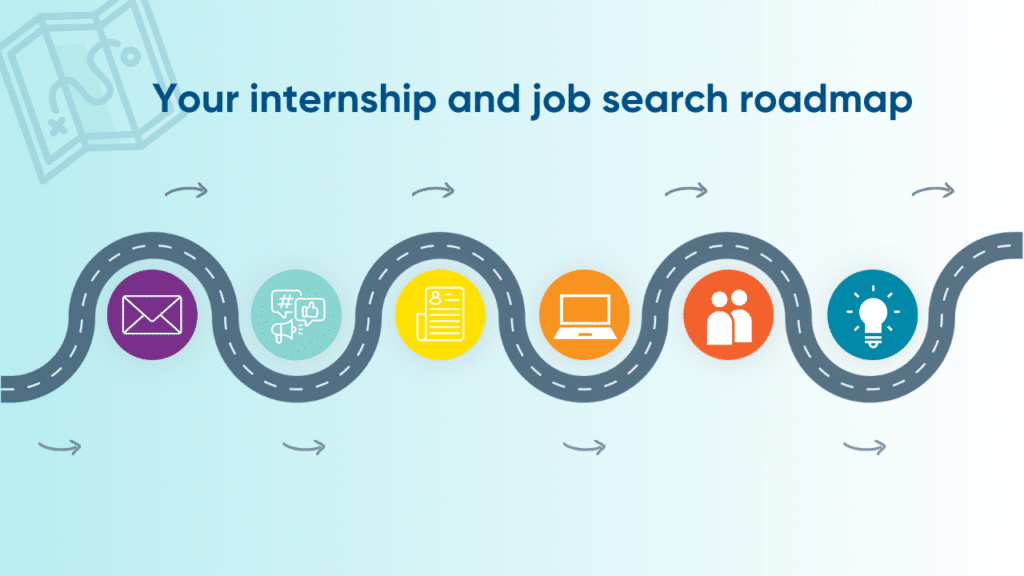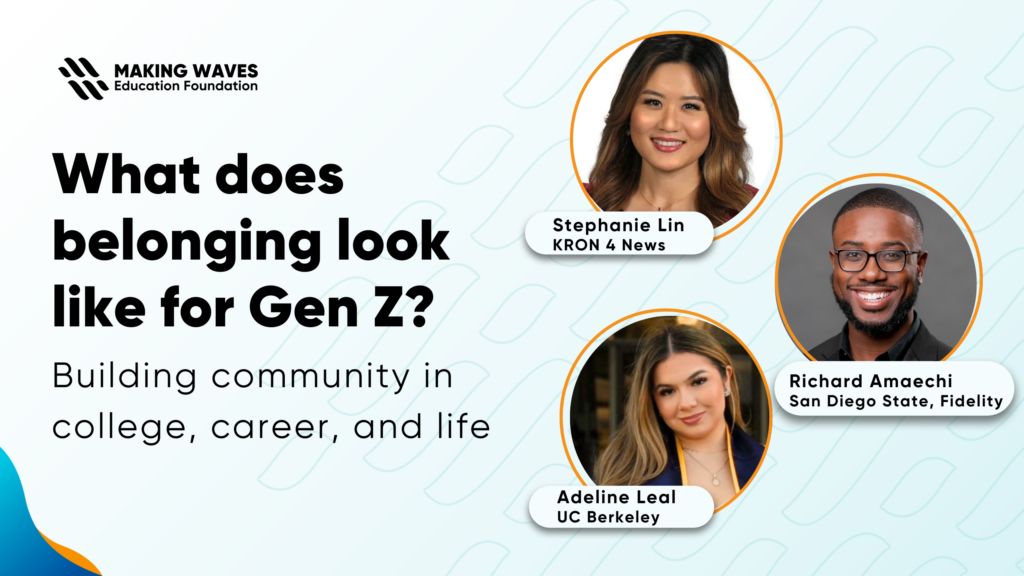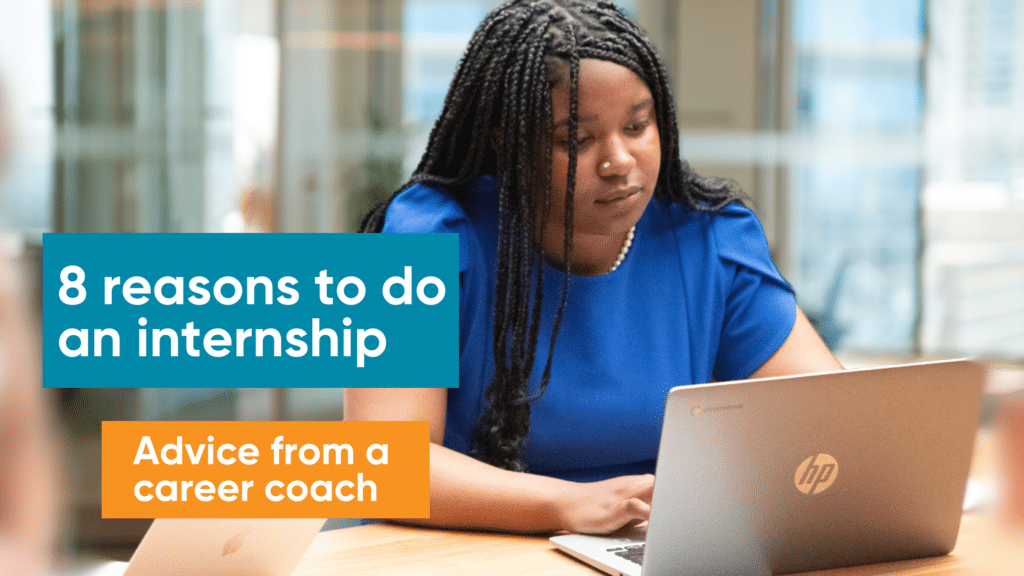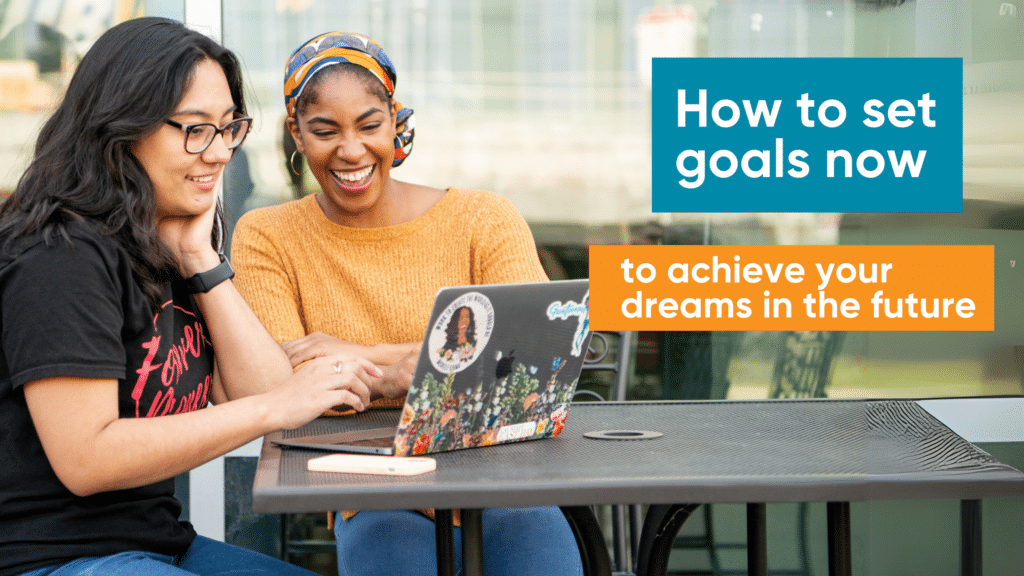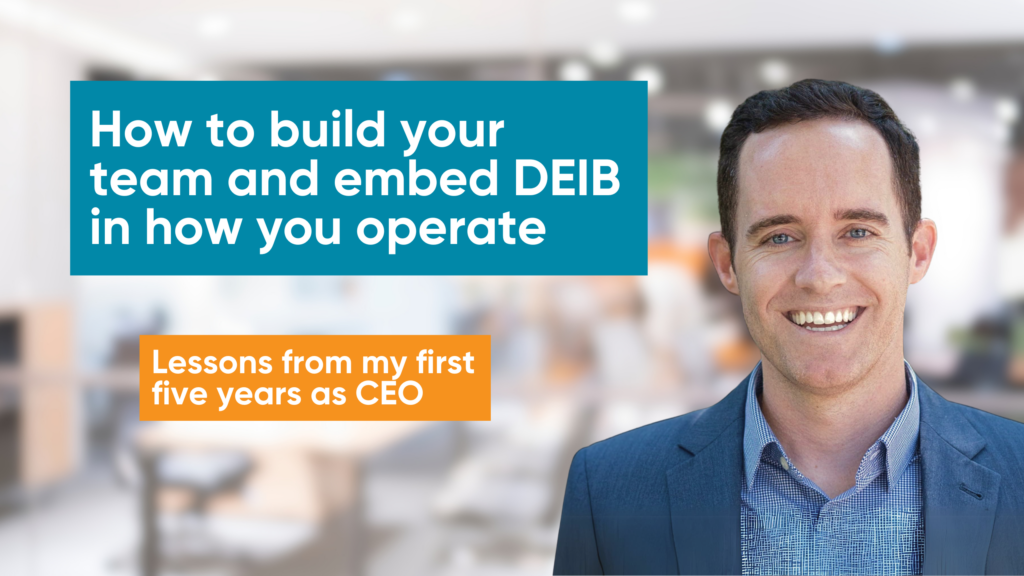
How to build your team and embed DEIB in how you and your team operate
by Patrick O’Donnell
My First Five Years as a CEO: My Biggest Lessons Learned
A few years ago, the Making Waves community came together to define our core values, and one of my favorites is Learn & Grow: We stretch ourselves by staying curious and testing new ideas. We reflect, celebrate, iterate, and share our learning to support others’ growth.
This summer marks an important personal and professional milestone for me: my 5th anniversary as CEO of Making Waves Education Foundation. It’s been fun to look back on my journey in education and reflect on the lessons I’ve learned and how I’ve grown, especially during my first five years as CEO.
After starting my career as a teacher, I spent 10 years leading teams at Teach For America. I learned how to be a manager, to lead with an equity lens as a white male, to shape team culture, and to define and drive strategy. When I joined Making Waves five years ago, I was excited to put into action all my leadership learnings as the organization’s first-ever CEO.
Five years into my role, I am “learning out loud” to share some of the lessons that have helped me get better, be more effective, and sustain my energy and commitment to the work. My hope is that sharing some of my biggest leadership lessons can support the learning and growth of other nonprofit leaders.
My experience is just one experience – it’s unique to me and these lessons are not a solution to challenges faced by nonprofit leaders. For aspiring leaders and others in executive leadership, I do hope though that you can find something here that resonates with your own experiences or provides a fresh perspective that helps you lead and sustain your leadership in the nonprofit sector.
How to build your team and embed DEIB in how you and your team operate
Talent is everything.
If you’re an aspiring CEO or new CEO, having an incredible team is one of the most important levers for driving organizational impact and outcomes.
This means a top priority will be building your team and embedding diversity, equity, inclusion, and belonging in how you and your team operate. I’ve learned that making this a reality requires both hiring talented people AND building the collective, a cohesive team. It also means embedding DEIB into our policies and practices.
Making Waves feels like a different organization today compared to five years ago in large part due to the way people across our team have embraced and pursued these efforts. We’ve built an incredibly diverse and talented team where over 75% of the team, managers, and senior leaders are people of color. And we’ve built an inclusive team – in our bi-annual engagement survey, our team consistently names DEIB as one of our greatest strengths.
This work is never perfect, and it’s never static. We continue to invest in it, including this year’s focus on supporting managers to be inclusive leaders. I’m learning a lot about how to do this work well, and I’m proud of our team’s progress and who we are as an organization.
Here are some key learnings.
1. Build and shape cohesive teams
We have a super talented team at Making Waves – they’re amazing – and it took real work and intentionality to build this team. Here are some approaches:
Define a clear purpose for your senior leadership team
- Senior leadership teams must have a clear purpose for their work together and focus on the high-impact and challenging areas that this group is uniquely positioned to tackle.
- I have drawn a lot of inspiration from the book Senior Leadership Teams: What it Takes to Make them Great to set this purpose and focus at Making Waves.
- My senior leadership team and I co-created three areas to focus on: organizational strategy, organizational culture, and board engagement. Everything we do together now falls within these focus areas.
Invest in your managers
- Your leadership as CEO doesn’t stop with your senior team. Investing in your managers and senior-level individual contributors is critical to a high-performing team.
- We formed a leadership team comprised of all managers and senior leaders, and over time we’ve increased our meeting frequency to every other week, in-person. This means the people who lead teams and cross-functional projects spend regular time together building relationships and trust, gaining perspective on organizational goals and priorities, giving input and feedback on initiatives, and building skill at being high-performing and inclusive leaders.
- As a result, you’ll have more coherence and clear communication across the organization, especially if you have layers within your structure, as this group will have perspective and skills they need to be effective leaders and ambassadors of organizational strategy and culture.
2. Aspire to embed Diversity, Equity, Inclusion, and Belonging into how you and your team operate
When I started at Making Waves, we didn’t have a strategy for Diversity, Equity, Inclusion, and Belonging, or DEIB – a fundamental need for all organizations, and especially for an organization whose mission is grounded in tackling systemic barriers to opportunity for students of color and students from low-income backgrounds.
In addition, I’m a white, male CEO leading an organization in this context, so I must do consistent intentional work to ensure I’m leading with equity. This means making sure that our program model addresses systemic barriers to opportunity and that through our organizational policies and practices, we’re creating a diverse, equitable, and inclusive team where every individual can thrive and achieve their greatest impact.
To start, we formed a DEIB committee to define organizational priorities and partnered with an external firm to lead training for our SLT and broader team. As we were doing that work, George Floyd was murdered and alongside our country, we grappled even more with systemic racism and what we needed to do as an organization to ensure we were promoting equity both in our programmatic work and on our team.
The truth is though, those external training sessions didn’t work.
We’d engage in powerful sessions together with talented outside facilitators, but when the sessions ended, they didn’t lead to clear changes and progress for how we operated as an organization. The learning we were doing together wasn’t set up to then transfer into our policies, systems, practices, and behaviors.
We learned what many organizations have learned over the past four years: structural change that centers equity is an inside job.
So, we changed our approach and have focused on embedding DEIB into everything we do. Here are three approaches:
Make policies and systems more equitable
- We revamped our compensation policy. This included making corrections for any gaps in salary along lines of race and gender. It also meant implementing bi-annual pay equity reviews, eliminating salary negotiations, and paying staff members who serve on committees.
- We revamped hiring and performance management systems to focus on building diverse candidate pools, including in our finalist rounds, and investing in clear rubrics and calibration training for managers to ensure consistent and fair performance ratings across the organization.
Clarify decision-making
- We defined a clear approach to organizational decision-making, which requires stakeholder input from students, staff, and board on the biggest organizational decisions, and prioritizes most decisions being made throughout the organization rather than by senior leaders.
Prioritize
- We focused our responses to bi-annual engagement surveys by only tackling 1-2 priorities and spending 6-12 months focused on making change in those areas rather than tackling everything (which is what we used to do!). Taking this approach has helped us make leaps in essential areas like growth in eNPS and psychological safety.
More in this series
This article is part of a four-part series by Patrick O’Donnell sharing his leadership learnings as a nonprofit CEO. Follow along with the series below.
How to think big and find sustainability
August 29, 2024
How to build resilience in uncertainty
August 29, 2024
Patrick O’Donnell
About Making Waves Education Foundation
At Making Waves, we are committed to educational equity. Making Waves Education Foundation is a Bay Area nonprofit that supports Making Waves Academy – a public charter school with more than 1,100 5th through 12th grade students – and leads college and career programming with more than 430 college students.
Knowing the opportunities that come with a college degree, we partner with historically underrepresented and underserved students to help make college affordable and graduation attainable. Centering the journeys of our students, our personalized approach includes college and career coaching, scholarships, and financial planning.
Our alumni network includes more than 730 college graduates, who earn their degrees and land jobs at more than twice the rate of their first-generation, low-income peers, with 85% graduating debt-free.
Related News and Resources
Your internship and job search roadmap
September 3, 2024
🎙️ Panel: What does belonging look like for Gen Z?
September 3, 2024
Eight reasons to do an internship while in college
September 3, 2024
How to set goals now to achieve your dreams in the future
September 3, 2024

